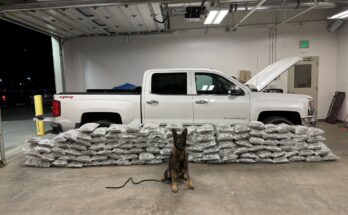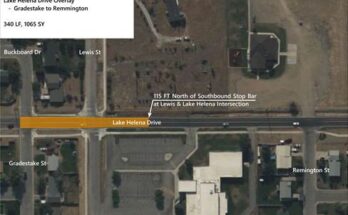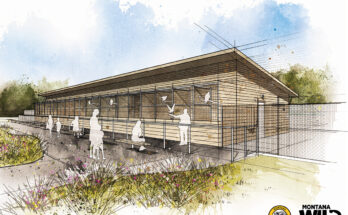
Multiple wildfires located southwest of Great Falls are generating smoke drifting into the surrounding area. The information gathered was updated on September 3rd, according to https://inciweb.wildfire.gov/
The Sharrott Creek Fire was started by lightning and grew quickly during a wind event on August 23rd. The primary values at risk are the private properties along the edge of the Bitterroot National Forest on the east side of the fire. This is where firefighting resources will be focused. The western portion of the fire is burning in remote, rugged terrain with little to no access to firefighting resources. West of the fire lies the Selway-Bitterroot Wilderness.
The Sharrott Creek Fire as of September 9th, was 3,018 acres in size and 36% contained.
At the fire’s northernmost point, near the head of the Larson Creek drainage, crews are improving the constructed line and using natural barriers to hold the fire within its current footprint. Engines will continue to patrol the fire’s eastern edge to check for any areas of residual heat. To the south, crews are using water to cool hot spots from the most southern point of the fire west towards the St. Mary’s Trailhead. Fire managers are optimistic about limiting the fire spread south. A rappel module remains near the St. Mary’s Trail, digging handline to tie together natural control features like rocky areas void of available fuel.
The McDermott Fire, located in the Upper Willow Creek area, is burning in an inaccessible area containing a large concentration of standing dead trees that pose challenges to ensuring firefighter safety and in responding to potential medical emergencies, jeopardizing the well-being of firefighters and other responders.
The McDermott fire as of September 9th, was 319 acres in size.
Helicopters dropped water on the fire during the initial attack phase, but high winds and the inaccessibility of the fire location resulted in fire growth. Additionally, drift smoke from other large fires to the west and south resulted in the inability to fly additional helicopters for air operations in subsequent days.
Firefighters are continuing with suppression efforts on the eastern flank of the fire to minimize fire growth towards private property. Aviation support will be limited today based on forecasted winds and low visibility due to hazy conditions.
The Grouse Fire as of September 9th, was 6,000 Acres in size and 22% contained.
A burned landscape presents several safety hazards that either did not exist prior to the fire or have been exacerbated by the effects of the fire. These hazards include unstable soils that allow rocks to dislodge and roll down steep hillsides; fire-weakened trees and snags that can fall over or large limbs breaking away in windy conditions; and stump holes where fire has burned through a tree root system and created cavities that can collapse under your feet. Always remember to be aware of your surroundings and aware of the hazards in a burned area. We are asking recreationists and hunters to please stay out of the fire area for firefighters and public safety.
Suppression efforts on the southern portions of the fire will be to monitor and patrol. Firefighters will continue to hold established control lines along the fire perimeter and monitor fire behavior.
Some residual heat is present in the Evans Creek/Reservoir Creek area and the Stine Mountain area, producing some smoke but posing no threats or issues. The fire in the southwest corner near Reservoir Creek is mostly backing, with short uphill runs to the west and up the ridge towards Lost Horse. With the returning warmer and drier conditions there could be increased fire activity.
As of September 9th, the Grouse Fire encompassed an area of 6,000 acres and 22% contained. In the fire’s southern regions, suppression efforts will focus on monitoring and patrolling, with firefighters maintaining control lines along the fire perimeter and monitoring fire behavior.
The residual heat in the Evans Creek/Reservoir Creek and Stine Mountain areas may produce some smoke but does not pose any immediate threats. Notably, in the southwest corner near Reservoir Creek, the fire predominantly exhibits backing with brief uphill runs to the west and up the ridge towards Lost Horse. Anticipated warmer and drier conditions may lead to heightened fire activity.
Please continue to check the Great Falls Gazette for updates as we strive to provide you with information throughout the fire season.


